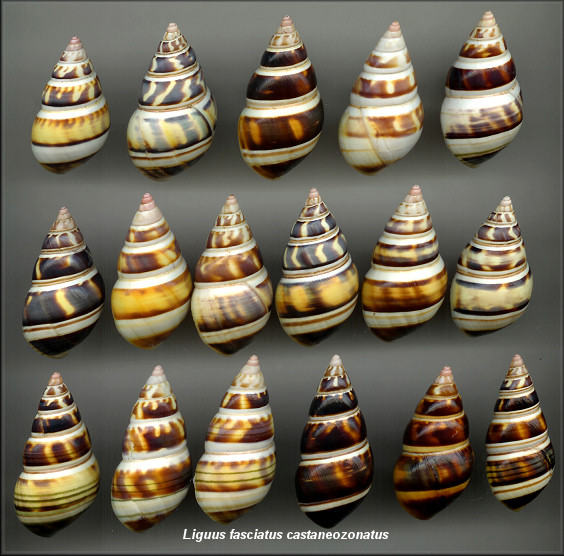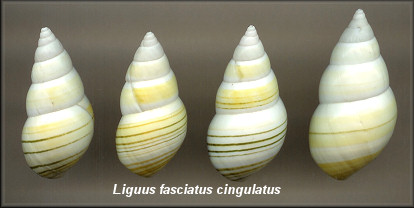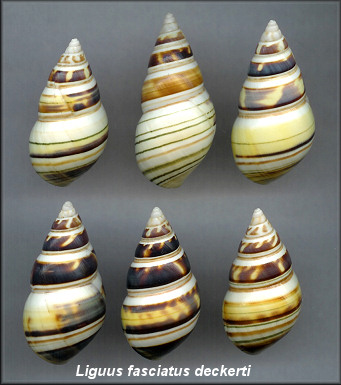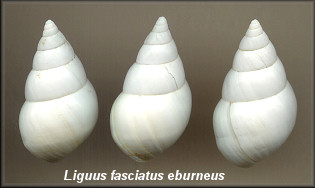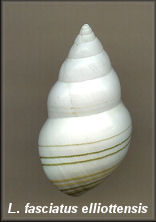|
|
| Form castaneozonatus from Brickell Hammock can be extremely variable in shape and coloration. This is due, in part, to the largely mixed gene pool in the hammock. Often, castaneozonatus (and some other forms) will exhibit the markings of other shells in the hammock. Note the distinct testudineus-type and castaneus-type markings on the "castaneozonatus band" of some of these shells. (MWJ) |
|
|
| Brickell Hammock is the type locality for Liguus fasciatus cingulatus. The form is characterized by the white tip and base-color, with a broad yellow zone. The yellow zone is sometimes very faint to lacking, so it can be deduced that this form clines into eburneus. (MWJ) |
|
|
| In some mixed hammocks, form castaneozonatus will turn up with varying degrees of pink coloration in the tip and columellar regions. Form castaneozonatus-type shells that have lost all pink were described as form deckerti. (MWJ) |
|
|
|
Usually less bulbous than Liguus fasciatus lossmanicus and invariably a solid white or ivory white shell, it clearly displays the "Brickell sheen." Sometimes it has a few green lines, usually at the base of the shell. This shell clines fully into cingulatus, which then approaches lossmanicus. Selected shells can usually be pigeonholed into one form or another. (MWJ) |
|
|
| In his book "The Liguus Tree Snails of South Florida," Henry Close called this Brickell shell form elliottensis. Noting the resemblance to some N. Key Largo shells, this is understandable. It has an absolutely white ground color. Most Brickell shells exhibit enough characteristics to make them typically definite as to form. Others, such as this one, leave me a bit perplexed. In my collection, I have most closely placed it with my specimens of Liguus fasciatus lossmanicus. (MWJ) |
|
|
